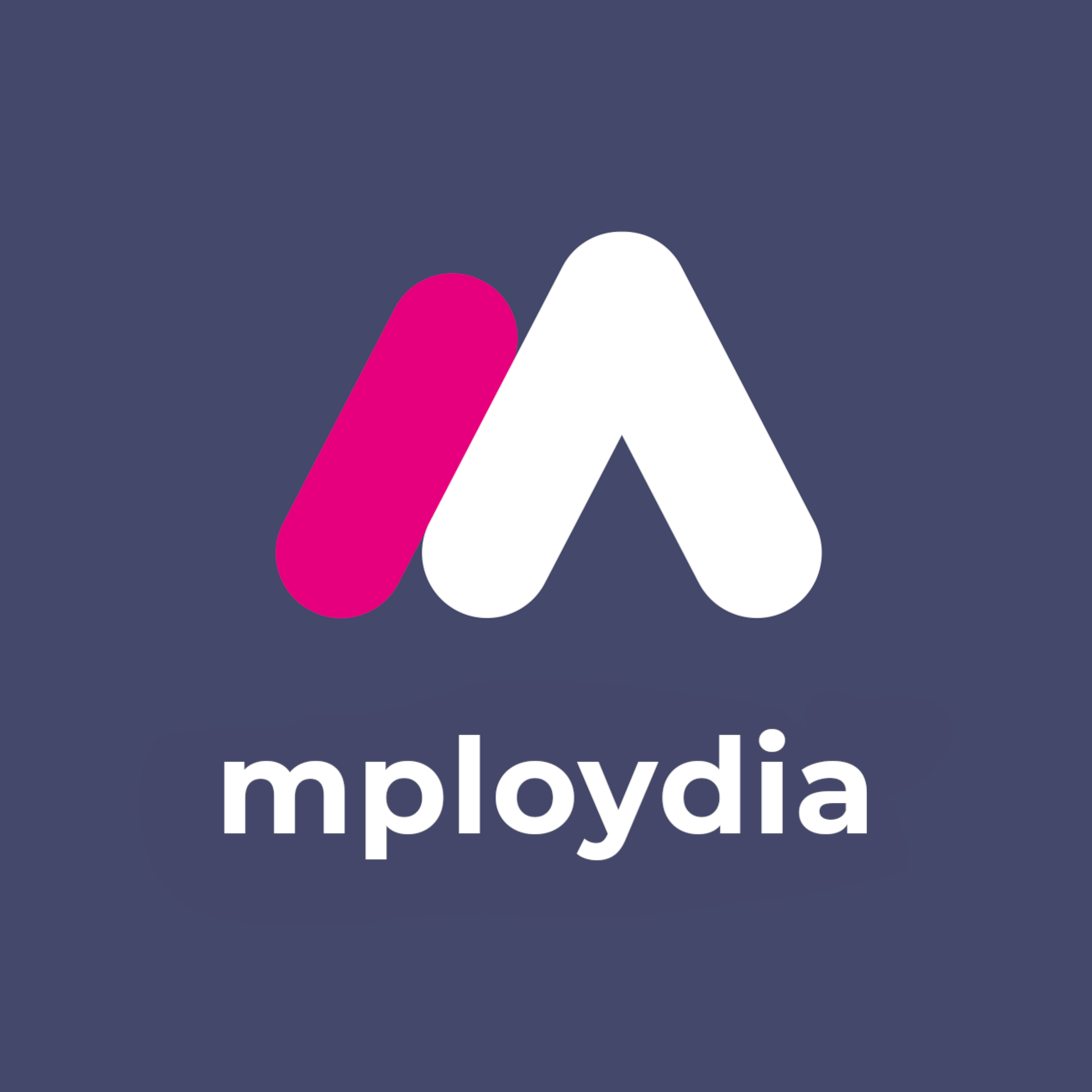
Job Search Sprints: Build Momentum and Get Hired Faster Now
Job search sprints: the disciplined system that gets results
If your job hunt feels like trudging through wet cement, you are not alone. Most people spread their effort thin over months, wait for replies, and hope something sticks. Hope is not a plan. What if you ran your search in short, focused sprints, measured results daily, and improved weekly? That is how high-performing teams ship products. It also works for landing a job. This article shows you exactly how to run job search sprints with precision, discipline, and momentum. Expect templates, metrics, and battle-tested tactics you can use this week. No fluff. Real output. Real interviews.
What are job search sprints?
Job search sprints are time-boxed cycles of focused effort, usually 10 working days. Each sprint has a single outcome goal, a prioritised backlog, clear metrics, and a short retrospective. The approach compresses time, forces choices, and builds momentum. You stop guessing and start iterating.
Why sprints beat the usual approach
- Time-boxing creates urgency and focus
- Constraints drive quality and better decisions
- Daily metrics expose what works and what wastes time
- Short feedback loops accelerate learning and confidence
- Predictable cadence reduces stress and prevents burnout
The sprint framework at a glance
- Cadence: 10 working days, repeat
- Outcome goal: one measurable result per sprint
- Backlog: a single, prioritised list of tasks across applications, outreach, research, and skill proof
- Kanban: columns for Backlog, Ready, Doing, Waiting, Done with strict work-in-progress limits
- Metrics: daily inputs and conversion rates, reviewed in a simple dashboard
- Rituals: daily stand-up, mid-sprint review, end-of-sprint retrospective
How to set your first sprint goal
Vague goals kill momentum. Pick one outcome that proves progress.
Examples you can adopt today
- Secure 2 first-round interviews for junior data analyst roles in Manchester
- Book 5 referral calls with product managers at target companies in fintech
- Publish 1 portfolio project and include it in 10 tailored applications
- Get 3 warm introductions to hiring managers for entry-level marketing roles in London
Make the goal measurable and time-bound. Avoid vanity targets like “apply to 50 jobs”. Prioritise quality actions that raise signal to employers.
Build your job search backlog
Your backlog is a single, consolidated list of work. Group items by value stream. Keep each item small enough to finish in a day.
Core value streams and example backlog items
- Target roles and companies
- Define role scope: job titles, level, location, salary floor
- Build a 50-company target list using industry reports, funding news, and talent pages
- Create a boolean search string for LinkedIn Jobs and set alerts
- Tailored applications
- Map the job spec to your CV using a skills matrix and impact statements
- Write a tailored cover letter with three proof points
- Submit through the ATS and log tracking details
- Outreach and referrals
- Identify 3 mutual connections per target company
- Send a concise referral ask with CV and role link
- Follow up using a 5-1-30 schedule
- Interview pipeline
- Prepare 5 STAR stories aligned to the job spec
- Draft a 60-second value pitch and 3 insightful questions for the hiring team
- Practise a mock interview and record feedback
- Portfolio and skill signals
- Ship a small, relevant project that proves capability
- Add the project to a simple site or GitHub with a 150-word readme
- Share a short write-up on LinkedIn to attract attention
- Research and intelligence
- Capture 3 insights about each target company: strategy, product, recent news
- Save competitor roles to infer skill demands and salary ranges
- Wellbeing and operations
- Set work blocks, breaks, and an end-of-day shutdown routine
- Prepare 3 reusable outreach templates to reduce friction
Prioritise with ruthless clarity: what will most likely generate interviews this sprint? Put that at the top. Everything else waits.
Design your sprint Kanban with WIP limits
Use a simple board with columns: Backlog, Ready, Doing, Waiting, Done. Set strict work-in-progress limits to prevent context switching.
Recommended WIP limits
- Ready: max 7
- Doing: max 3
- Waiting: max 5
Once Doing has 3 items, you cannot start a fourth until one moves to Waiting or Done. This single rule will double your throughput.
Daily operating rhythm that actually works
Adopt a predictable daily routine. Protect deep work. Batch shallow tasks.
- 08:30 Stand-up: 10 minutes. State your sprint goal, the 3 tasks for today, and the one blocker
- 09:00 Deep work block 1: 90 minutes. Tailored applications or portfolio work
- 10:45 Admin: 30 minutes. Log metrics, tidy Kanban, schedule follow-ups
- 11:30 Outreach block: 60 minutes. Referrals, hiring manager notes, follow-ups
- 12:30 Break
- 13:30 Deep work block 2: 90 minutes. Research, prep, or interview practice
- 15:15 Quick scan: 30 minutes. Respond to messages, adjust tomorrow’s Ready column
- 16:00 Shut down: write a 3-line daily summary and set tomorrow’s top 3 tasks
Protect the deep work blocks. That is where outcomes are created. Everything else supports those blocks.
Choose an outcome-focused metric stack
Track inputs and conversions. Build a simple dashboard in a spreadsheet or Notion. Review daily.
Pipeline metrics
- Target companies in list
- New suitable roles found
- Tailored applications sent
- Warm introductions requested
- Referral calls booked
- Screening calls booked
- First-round interviews completed
- Offers in progress
Conversion rates to monitor weekly
- Application to screening rate: screenings divided by tailored applications
- Screening to interview rate: interviews divided by screenings
- Outreach to call rate: calls divided by outreach messages
- Interview to offer rate: offers divided by interviews
Useful benchmarks for entry-level searches
- Application to screening: 10 to 20 percent with tailored CVs
- Outreach to call: 20 to 40 percent for warm intros, 5 to 10 percent for cold
- Screening to interview: 50 to 70 percent with strong prep
If your numbers are below these, fix inputs and quality, not volume.
Quality beats volume: how to tailor at speed
Use a tight process to tailor in under 30 minutes.
- Extract 8 to 12 core requirements from the job advert
- Map each requirement to a proof point in your CV using impact statements
- Add the role title and company name to your CV headline and cover letter
- Mirror exact keywords naturally in your CV profile and skills section for ATS parsing
- Remove unrelated items that dilute signal
Impact statement formula
Action verb + skill used + context + measurable result
Examples
- Built a Google Looker Studio dashboard that cut weekly reporting time by 60 percent across 3 teams
- Led a campus event with 200 attendees, closed 8 sponsors, and raised £3,500 for charity
- Automated a data cleaning script in Python that reduced processing time from 45 minutes to 8 minutes
Cover letter structure that converts
- Opening: one sentence that states role, why you match, and one proof
- Middle: two short paragraphs, each with a proof aligned to a core requirement
- Close: call to action, availability, and link to portfolio or project
Three outreach templates you can use today
LinkedIn connection note to an alum or mutual contact
Hi [Name], I am applying for the [Role] at [Company]. We share [Connection or group]. Two lines on why I am a strong fit: [Skill 1] and [Proof 1]. Could we schedule a 10-minute call this week? I will keep it concise.
Referral ask by email
Subject: Referral for [Role] at [Company]
Hi [Name], I am applying for [Role] in your team. Three quick points:
- Relevant proof: [Impact statement]
- Portfolio: [Link]
- Why [Company]: [Specific reason tied to product or strategy]
Would you be open to referring me if you feel the fit is right? CV and job link attached. Thanks for considering.
Hiring manager note after applying
Hi [Name], I just applied for [Role]. I built [Relevant proof, one sentence]. It matches your team’s [Goal or tech stack]. If helpful, I can share a short demo. Open to a quick call to discuss fit.
Follow-up schedule that gets replies
Use a simple cadence to avoid being a pest.
- Day 0: Send first message or application
- Day 5: First follow-up, short and polite, add one new piece of value
- Day 30: Second follow-up, reference a recent company update or small project you built
Stop after two follow-ups unless invited to continue.
Build a simple job search CRM
You cannot scale what you do not track. Use Airtable, Google Sheets, or Notion. Include these fields:
- Company and role title
- Source and link
- Hiring manager or recruiter name and email
- Application date and method
- Status with date stamps
- Notes and next action
- Tags for function, location, seniority, and priority
- Outcome and lessons learned
Review this daily for stuck items in Waiting. If something is waiting for more than 5 working days, trigger a follow-up or mark it as cold and move on.
Finding higher quality roles faster
- Use targeted alerts: set boolean strings on LinkedIn and Indeed. Example for marketing analyst in London: ("marketing analyst" OR "growth analyst") AND (SQL OR Tableau OR "Google Analytics") AND (London OR "remote UK") NOT senior NOT lead
- Track funding rounds: search recent Series A to C in your sector on Crunchbase news, Sifted, and UKTN. New funding means new hiring
- Follow team pages and engineering blogs of target firms. Jobs often appear there before aggregators
- Scan local networks: industry Slack groups, university alumni boards, and meetups
Ship proof fast: portfolio sprints
For first-time jobseekers, proof beats claims. Design one sprint to ship one relevant proof.
Ideas by function
- Marketing: run a small campaign for a local charity. Outline strategy, creatives, results, and learning in a one-page case study
- Data: analyse a public dataset relevant to a target company, build a clear dashboard, and explain decisions in 300 words
- Product: design a wireframe that solves a known user pain in your target app. Add 3 metrics you would track post-launch
- Customer support: record a mock ticket triage with clear tone, empathy, and resolution. Document your process
- Operations: map and improve a simple process with a time or cost saving. Show before and after
Keep scope small. Deliver within the sprint. Add the result to your CV, LinkedIn, and outreach.
Interview preparation inside the sprint
Do not cram the night before. Spread practice across the sprint.
- Build a question bank: top 20 behavioural and 10 role-specific questions
- Write and rehearse 5 STAR stories, each linked to the job spec
- Practise aloud and record yourself for 10 minutes daily
- Prepare 3 smart questions for each interview that show insight into the business
- Create a one-page interview cheat sheet with key numbers, names, and examples
A/B test to improve response rates
Treat your search like an experiment. Change one variable at a time.
- CV: test headline and top 4 skills section
- Cover letter: test opening line and one proof point
- Outreach: test subject lines and call to action
- Timing: test sending outreach at 08:15, 12:05, and 17:30 local time
Log results. Keep what works. Discard the rest.
Weekly review and end-of-sprint retrospective
Mid-sprint check, day 5
- Are you on track to hit the sprint goal
- Which tasks in Doing are stuck. Remove or unblock
- Do metrics show poor conversion. Fix quality before adding volume
End-of-sprint retro, 30 minutes
- What went well: list three items
- What was painful: list three items
- What will change next sprint: list three specific process tweaks
Schedule the next sprint immediately. Do not drift.
Example 10-day sprint plan
Day 1
- Finalise sprint goal and backlog
- Set alerts and build the first 25-company list
- Tailor and submit 2 high-fit applications
Day 2
- Outreach: 5 targeted referral asks
- Deep work: portfolio task or STAR story building
- Log metrics and update Kanban
Day 3
- Tailor and submit 2 applications
- Hiring manager notes to 2 roles already applied
- Interview practice: 20 minutes
Day 4
- Research 5 companies and capture insights
- Outreach: 5 new contacts, 3 follow-ups
- Portfolio: complete core deliverable
Day 5
- Mid-sprint review
- Tailor and submit 2 applications
- Record a mock interview and review
Day 6
- Outreach: 5 referral asks, 5 follow-ups
- Publish portfolio deliverable and add to CV and LinkedIn
- Apply to 1 stretch role
Day 7
- Tailor and submit 2 applications
- Hiring manager notes to 2 new roles
- Interview practice: 20 minutes
Day 8
- Research 5 more companies and enrich the target list
- Outreach: 5 new contacts, 5 follow-ups
- Admin: tidy CRM, close dead items
Day 9
- Tailor and submit 2 applications
- Prep for booked screens or interviews
- A/B test one change in outreach
Day 10
- Final follow-ups and admin
- Sprint retrospective and next sprint planning
Common pitfalls and precise fixes
- Spraying applications at scale. Fix: hard filters for role, location, salary, and stack. Only apply when you can map 8 to 12 requirements to proof
- No follow-up discipline. Fix: set the 5-1-30 cadence. Use calendar reminders. Keep messages short and value-led
- Weak CV signal. Fix: rewrite with impact statements, remove fluff, and front-load proof that matches the spec
- Endless research. Fix: time-box research to 45 minutes per company. Move on to action
- Burnout. Fix: cap Doing to 3, add one rest afternoon per sprint, and stop work at a fixed time
- Waiting for recruiters to respond. Fix: parallel tracks of applications and warm outreach. Control what you can control
Mindset for first-time jobseekers
You do not need years of experience to be valuable. You need to show evidence of ability, discipline, and learning speed. Sprints prove all three. Focus on proof, not perfection. Ship small, improve weekly, and show your working.
Ethical edge: why this approach matters
Meaningful work changes lives. When talent is everywhere but opportunity is uneven, your system matters. Job search sprints reduce luck and increase agency. They help you take clear, compounding steps towards work that pays the bills and builds your future. That is the point.
Your 30-minute setup checklist
- Decide your sprint cadence and pick a clear outcome for the next 10 days
- Build a target list of 25 companies and set role alerts
- Create a Kanban with WIP limits and a simple CRM
- Draft or refine 5 impact statements
- Prepare 3 outreach templates and a 5-1-30 follow-up schedule
- Block two daily deep work sessions in your calendar
- Start tomorrow at 08:30 with a 10-minute stand-up
When to adjust your approach
- If application to screening is under 5 percent for two sprints, you are misaligned. Tighten targeting and improve tailoring
- If outreach to call is under 5 percent, your message is weak or targets are cold. Warm through mutuals or add a small value asset
- If you have screens but no interviews, practise more and sharpen stories to match the spec
- If interviews stall, request feedback, address the gap with a micro-project, and re-engage
Lightweight tools that help without becoming a distraction
- Kanban: Trello, Notion, or a whiteboard on your wall
- CRM: Google Sheets or Airtable
- Scheduling: Calendly or simple email windows
- Alerts: LinkedIn Jobs, Indeed, and company career pages
- Recording: your phone for mock interviews
Keep it simple. The tool is not the job. The outcome is the job.
A final word on discipline
Momentum beats intensity. Ten focused working days, repeated, will outperform bursts of frantic activity. You are building a system that generates interviews and offers. Start small, execute fast, measure honestly, and adjust. Start your first sprint next Monday. Put the date in your calendar now.
Next Steps
Want to learn more? Check out these articles:
Map Your CV to the Job Spec: A Tactical Step-by-Step Guide
First Job CV Proof Points Employers Notice, Trust and Act On
Write Impact Statements Not Duties on Your CV to Get Hired
Check out our Advanced Employability Course for all the help you need to get your dream job, fast.


